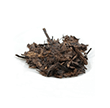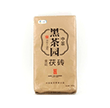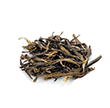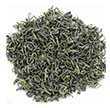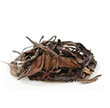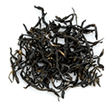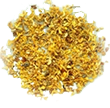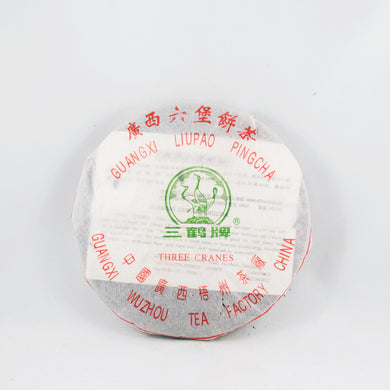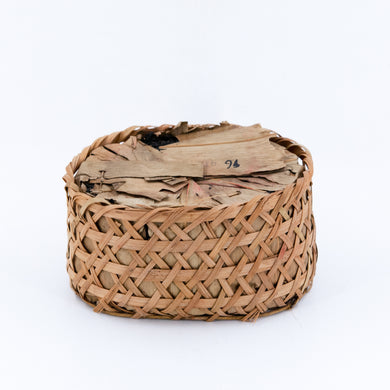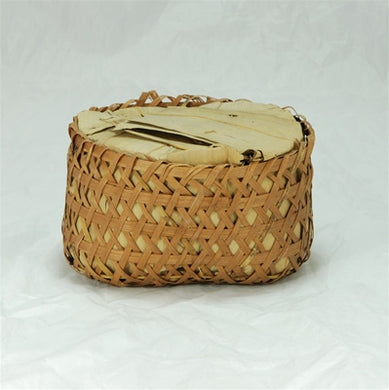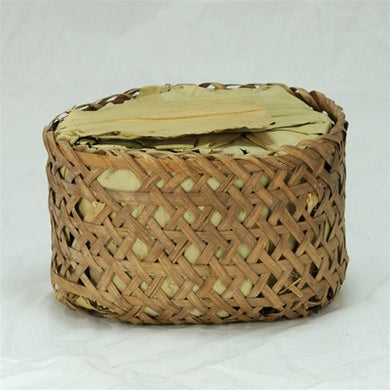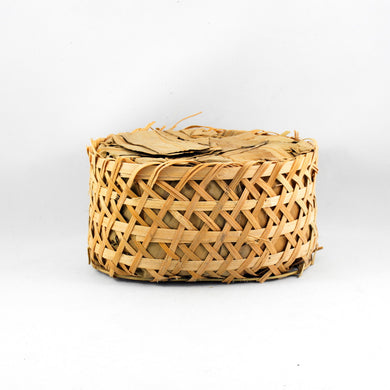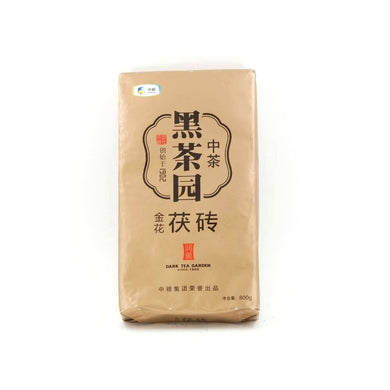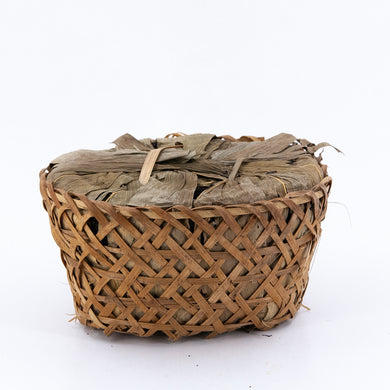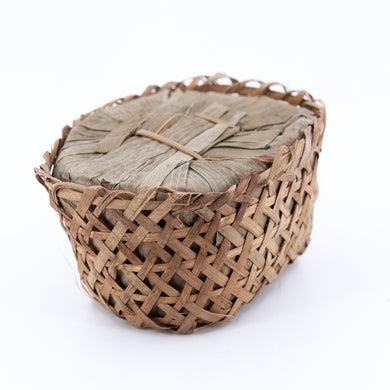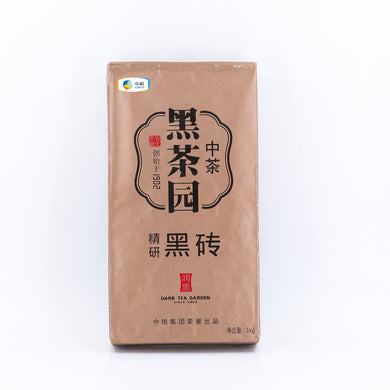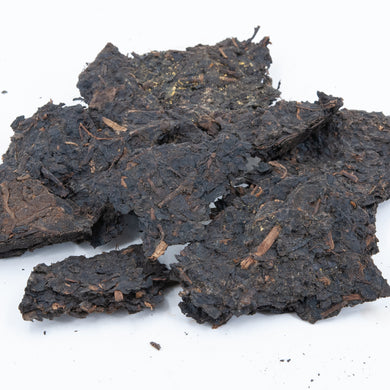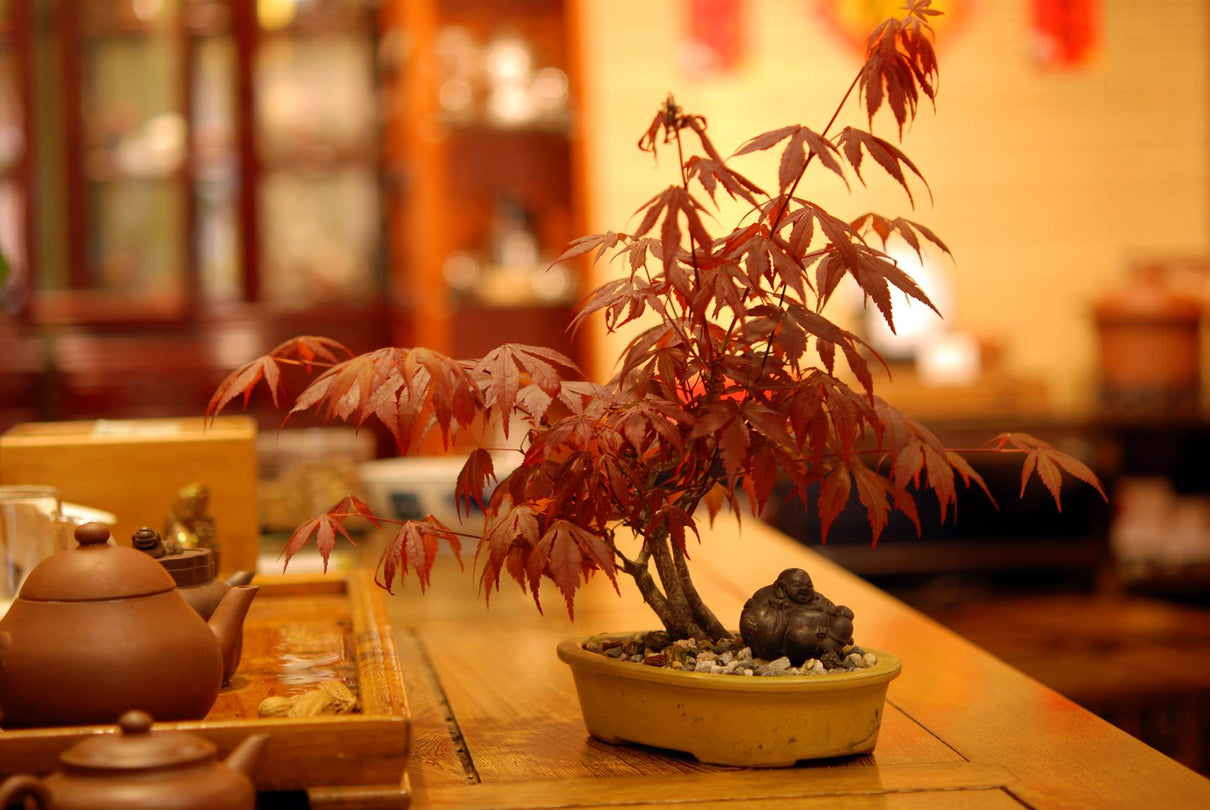Vintage Guangxi Liu Bao Loose Leaf Tea 1992 (Ripe/Shou)
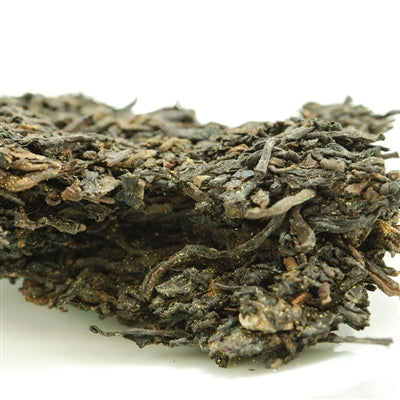
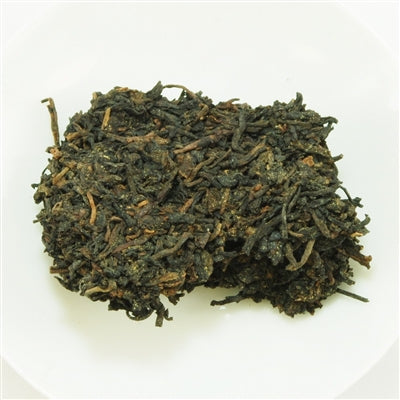
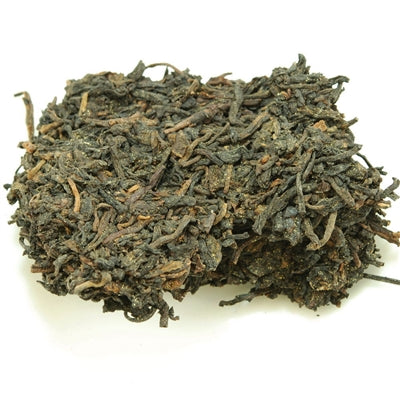
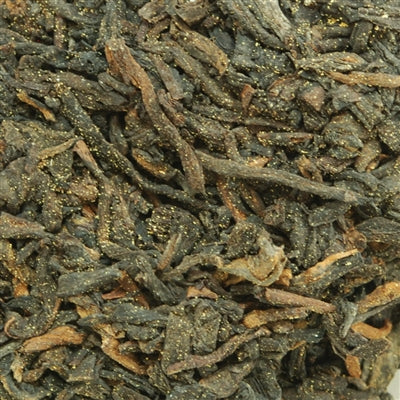
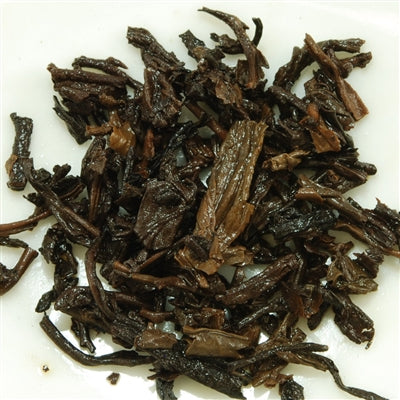
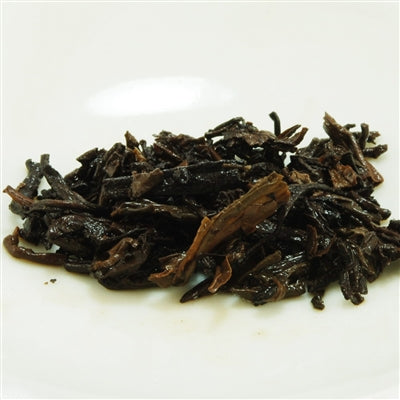
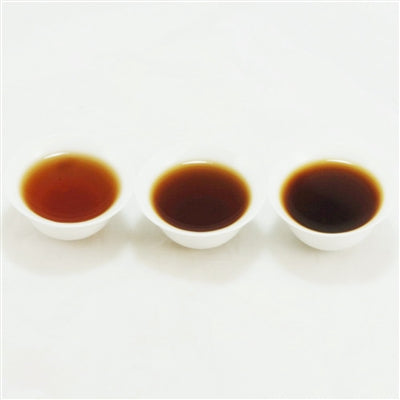
In 2011, I rediscovered this Liu Bao tea in my warehouse, where it had been aging since I bought it from China in 2001. This tea produced in 1992, initially stored in a 45kg to 60kg bamboo basket. The tea had a robust, earthy, and slightly bitter profile, leading me to withhold it from sale and allow it more time to mature in Vancouver. Over a decade later, during a summer reorganization, I was pleasantly surprised to find that the tea had evolved, offering a significantly enhanced flavor. This wonderful find is a testament to the beauty of aging Liu Bao tea, and I'm excited to share this exquisite vintage with fellow tea enthusiasts.
This unique aged Liu Bao tea, characterized by its small, dark leaves and a dense presence of Golden Flower on the surface, brews into a clear, bright tea with a deep black color with gelatinous quality.
Its earthy, woody aroma evidence to its aging in traditional tea cellar and wooden warehouse in the past. The initial infusion has a distinctive betel nut flavor, giving way to a smooth, rich, and full-bodied taste with a creamy texture. The tea imparts a lasting sweetness in the throat, enhancing the flavor and overall sensory experience over time.
Renowned for its relaxing and calming properties, this tea also offers a notable warming effect on the stomach.
*There is another Liu Bao tea cake (no golden flower) also available selling at the store.
Discover Liu Bao Tea
Liu Bao tea originates from Guangxi Province, specifically from Liubao Village in Cangwu County, Wuzhou City. Its history dates back 1500 years, gaining prominence in the 18th century as one of the top 24 famous Chinese teas. Traditionally, it's been marketed primarily to Guangdong Province, Hong Kong, Macao, and Southeast Asian countries for both daily consumption and medicinal purposes.
As a post-fermented tea, Liu Bao is classified as "hei tea" in China and is known to improve in taste and value with age. A pivotal moment came around 1956 when the Wuzhou Tea Factory advanced the cold-water wet piling process, making it a benchmark for modern fermentation techniques. By 1958, this process was already enhancing Liu Bao tea, a significant 16 years before its application in Pu_erh tea production, earning Liu Bao the title "Father of Shou Pu-erh Tea.
Tea cellar and wooden dry warehouse play a crucial role in developing the traditionally flavor and taste. After completing the wet-piling process, Liu Bao tea is aged in cellar beneath the mountain, providing optimal conditions for microbial activity that enhances the tea. Five months later, the tea is transferred to wooden warehouse made of pine and fir, where it continues to age. The interaction between the tea and the wood infuses the tea with a woody or medicinal fragrance. This two-stage aging process in cellar and wooden warehouse is crucial for developing Liu Bao tea's distinctive "betel nut aroma" over time.
Golden Flower
The Golden Flower, mainly Eurotium cristatum, is a beneficial microbe that emerges during the aging of tea, improving its flavor and texture. Discovered by scientists in the last 30 years, this microorganism has been studied by the Institute of Food Science at Jishou University, which found that it aids in the digestion and absorption of starch and protein while reducing fat absorption. The presence of Golden Flower is highly valued and considered indicative of high-quality, well-aged Liu Bao tea.
The Quick Way - 5 Easy Steps
Step 1
Rinse a teapot, small teacups and a small pitcher with hot water.
Step 2
Put one tablespoon of tea leaves in the teapot for every two people being served. Use more for large leaf tea or for a stronger taste.
Step 3
Place the tea leaves inside the teapot and pour in enough hot water to cover the leaves. Pour out the water immediately to rinse the leaves. Use to this chart for proper water temperatures.
|
Green Tea Silver Needle White Teas and most tea made from “tips” |
75C – 80C |
|
Taiwan Oolong Tips Red/Black Teas |
90C – 95C |
|
Black Teas Pu-Erh (Bow-Lay) Te Guan Yin (Iron Buddha) Da Hong Pao (Cliff Tea) Lapsang Souchong Phoenix Oolong Aged White Teas |
95C – boiling |
IMPORTANT NOTES:
- Too much or too little heat for the tea you are making will break down the leaves too quickly or too slowly and the flavour will be inconsistent. Temperatures can be approximate.
- *Boiling means when the water has just reached a slow boil with big bubbles. The Chinese call this “Fish-Eye Water”. For green tea, watch for small streams of tiny bubbles starting to rise from the bottom of the kettle. This is called “Crab-Eye Water”.
- For Oolong teas, the correct temperature is somewhere between these two. If you do not have a thermometer, let the water stand for 2 minutes or so after reaching a first boil to get 90 – 95C C / 194 – 203 F.
Step 4
Empty the teacups and pitcher. Pour enough hot water into the teapot again to cover the leaves. Wait 8 - 10 seconds and pour the tea into the pitcher and serve, a little longer for a stronger taste. For additional brews, repeat Step 4, deducting two seconds for the second brew and adding two seconds for each additional brew.
Step 5
As the aromatic compounds in the tea leaves dissolve in the water, you will notice the subtle flavours of the tea begin to change with each brew. You will be amazed at the difference! To make tea taste even better, try making tea using Gong Fu Cha method, the traditional Chinese art of tea-making.
The Traditional Way Using The Gong Fu Cha Method
You will need:
- Teapot - preferably a small Chinese Yixing teapot. These have the best heat handling properties for tea-making, as well as for developing the flavour. If you only have a large teapot, use the quantities of water as if a small teapot and tea shown on the charts.
- Small teacups (similar in size to Japanese sake cups) or tiny bowls
- Kettle
- Pitcher - small glass or porcelain
- Fine Strainer - to keep your tea clear and free of sediment
- Tea Tray - A cookie sheet or large flat dish lined with a towel can make a good tray to prepare your tea on.
Step 1 - Warm The Teapot and Pitcher, Sterilize The Teacups and Strainer
The first step is to use the right size of teapot for the number of people you are serving. Most teas taste best when made using a Yixing unglazed clay teapot. Use this chart for the correct size of teapot for the number of people you are serving (use this amount of water if you are using a larger teapot). Pour some hot water into the teapot, pitcher, teacups and over the strainer to rinse, warm and sterilize them.
|
Size of Teapot |
Volume (ml / fl oz) |
Number of People Served |
|
#1 size |
70 / 2.4 |
1 - 2 |
|
#2 |
100 / 3.4 |
2 - 4 |
|
#3 |
175 / 6.0 |
3 - 5 |
|
# 4 |
225 / 7.6 |
4- 6 |
Referring to this chart, determine the correct water temperature for the type of tea you are making. Too much or too little heat will break down the leaves too quickly or too slowly and the flavour will be inconsistent. Temperatures can be approximate.
|
Green Tea Silver Needle White Teas and most tea made from “tips” |
75C – 80C
|
|
Taiwan Oolong Tips Red/Black Teas |
90C – 95C |
|
Black Teas Pu-Erh (Bow-Lay) Te Guan Yin ( Iron Buddha) Da Hong Pao (Cliff Tea) Lapsang Souchong Phoenix Oolong Aged White Teas
|
95C – boiling |
* Boiling means when the water has just reached a slow boil with big bubbles . The Chinese call this “Fish-Eye Water”. For green tea, watch for small streams of tiny bubbles starting to rise from the bottom of the kettle. This is called “Crab-Eye Water”.
For Oolong teas, the correct temperature is somewhere between these two. If you do not have a thermometer, let the water stand for 2 minutes or so after reaching a first boil to get 90 – 97C C / 194 – 206 F.
Step 2 – Rinse The Tea Laves
Empty the teapot and pitcher of the warming water. Place the measured amount of tea into the teapot using this chart and fill with the proper temperature water from the chart above. When pouring water in, allow the water to overflow the top of the teapot until the bubbles disappear and the water runs clear.
|
Size |
Size of Leaves |
|||
|
Rolled Leaves |
Less than 1 cm / 3/8 inches |
1 – 2 cm |
2 - 4 cm |
|
|
#1 size |
0.5 - 1 |
0.5 - 1 |
1 – 1.5 |
1.5– 2 |
|
#2 |
1.5 - 2 |
1.5 - 2 |
2 – 2.5 |
2.5 – 3 |
|
#3 |
3 – 3.5 |
3 – 3.5 |
3.5 – 4 |
4 – 4.5 |
|
# 4 |
4 – 4.5 |
4 – 4.5 |
4.5 – 5 |
5 – 5.5 |
This chart shows the amount of tea to use (in number of tablespoons) based on the size of the tea leaves you are using and the size of teapot. Adjust for personal taste.
Replace the lid and immediately pour off all the water (or a bit longer if using compressed tea) and shake out the last drops. Then tilt the lid slightly open on the teapot. This allows the heat in the teapot to escape and not “cook” the leaves so they can retain their aroma
Step 3 –The First Brew
Fill the teapot until the water flows over the top. Place the lid on the teapot and count the proper number of seconds using this chart. Adjust times to taste.
|
|
Rolled Leaves |
Less than 1 cm / 3/8 inches |
1 – 2 cm |
2 - 4 cm |
|
Rinse the leaves |
4 - 8 seconds |
pour off the tea as quickly as possible |
1- 3 seconds |
2 - 4 seconds |
|
First Brew |
10– 15 seconds |
1 – 2 seconds |
9– 12 seconds |
12 – 15 seconds |
|
Second Brew |
8– 13 seconds |
2– 4 seconds |
8– 10 seconds |
10– 13 seconds |
|
Third Brew |
6– 10 seconds |
4– 6 seconds |
6–8 seconds |
8– 10 seconds |
|
Fourth Brew |
4– 10 seconds |
4– 6 seconds |
6– 8 seconds |
8– 10 seconds |
|
Fifth Brew |
6– 12 seconds |
8– 8 seconds |
8– 10 seconds |
10– 12 seconds |
If you have a tea tray, slowly pour a little hot water over the teapot for a few seconds while counting. At the end of the count, pour the tea into the pitcher and tilt the lid open on the teapot. Empty the teacups of the warming water and serve the tea.
Step 4 – Additional Brews
For the second brew, repeat Step 3 until there is no more flavour from the leaves. High quality tea will make many good tasting brews. The taste of low quality tea will start to fade after only a few brews. Believe it or not, high quality tea is usually less expensive to use in the long run than low quality tea, it tastes better and lasts longer!
If the leaves still have some flavour remaining when you finish, you can keep them in the teapot with the lid closed for up to 12 hours. When you're ready to make more tea, just pick up the timing for the next brew where you left off, less a few seconds.
Congratulations!
Congratulations, you are now ready to move on to a more advanced level of tea-making. For full instructions about Gong Fu Cha, see Gong Fu Cha - The Complete Guide To Making Chinese Tea by Daniel Lui)
Lio Bao Deliciousness
Yum: I wish this was my daily drinker! I hit it hard on the weekends when I can make the time to really enjoy this tea!
Vintage Guangxi Liu Bao Loose Leaf Tea 1992 (Ripe/Shou)
Very Fine ! As always, great products !!



